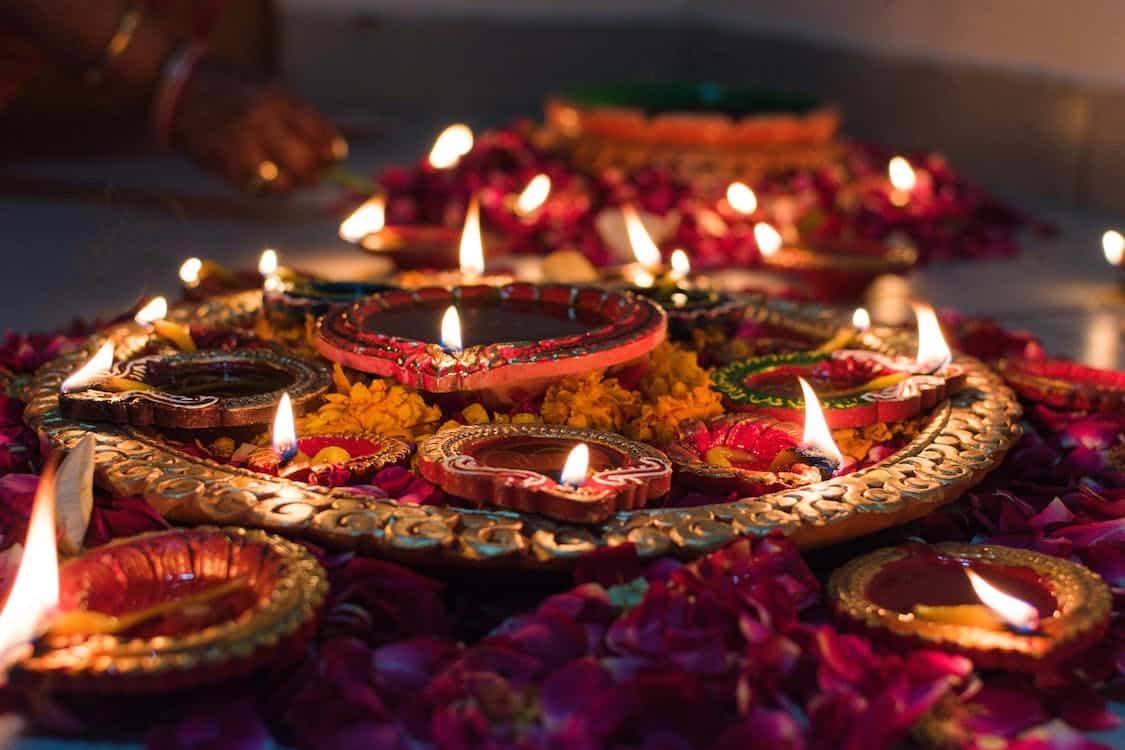
Informative
Diwali 2023: Traditions across India
Diwali, also known as Deepavali, is a radiant celebration of lights and spirituality that brings people together across India and worldwide. Diwali, often called the “Festival of Lights,” shares a common thread of illuminating the darkness and symbolizing the triumph of light over darkness. However, what sets Diwali apart are the distinctive and diverse traditions that cross the state borders that make it truly special.
From the lighting of Diyas (oil and clarified butter lamps) to the exchange of sweets and gifts, the diversity of customs and practices during Diwali is truly fascinating. In this blog, we will unravel the unique Diwali traditions that grace every corner of India and even extend their influence globally.
One of the most common Diwali traditions is the lighting of Diyas or oil lamps. These small, glowing lamps symbolize the victory of light over darkness and the triumph of good over evil. People place these Diyas around their homes, creating a warm and welcoming atmosphere.
Sharing sweets is another beloved Diwali tradition. Families and friends exchange delicious treats as a gesture of love and togetherness. It’s a sweet way to spread happiness and sweetness in everyone’s lives. Lighting Diyas, performing Puja ceremonies, wearing new clothes, exchanging meaningful gifts, and lighting firecrackers are a few common traditions of Diwali that are followed all over India. Now, let’s look at a few unique Diwali traditions across India.
Bandi Chhor Diwas in Punjab
For Sikhs, Diwali tells a story of their fight for freedom. A long time ago, Emperor Jahangir locked up Guru Nanak, the sixth Guru, because he was worried about the Guru’s growing popularity. The Sikh festival of Bandi Chhor Diwas marks the day when Guru Nanak was set free from the Gwalior Fort, and it happens at the same time as the Hindu festival of Diwali. On this day, Sikhs light lamps in their homes and gurudwaras; they enjoy fireworks, give and receive gifts, and share delicious meals.
West Bengal Tantric Puja
Agambagish Puja is a special form of Kali Puja celebrated in West Bengal. Agambagish, highly respected priests of Goddess Maa Kali, perform a powerful and sacred ritual to please her. They engage in deep meditation at places like mortuaries, sitting in a circle with human skulls that they’ve gathered and anointed with their own blood. This unique ceremony is observed in rural areas of West Bengal, particularly in places like Howrah, Midnapore, and Hoogly districts.
Gowardhan festival of Bidawan, Madhya Pradesh
In Bidawad village, Ujjain district, there is a special festival called Govardhan. It takes place on the day after Diwali. During this festival, villagers decorate their young cows with flowers. They then lie on the ground and let the cows walk over them. This event follows five days of fasting. The village comes together to witness this unique ritual, believing it will persuade the Gods to hear and answer their prayers.
Patthar Mela of Himachal
In the village of Halog, people from nearby villages gather for a special ancient fair called “Pathar mela,” which happens one day after Diwali every year. According to the local stories, this tradition of playing with stones in a friendly way began to replace the old practice of offering “human sacrifices” at the Bhadrakali temple in the village.
During Pathar Mela (gathering), there’s a friendly stone-throwing competition between two groups, the Katedus and Jhanogis. It’s said that one of the queens from the Dhami estate decided to put an end to the practice of human sacrifice, and Pathar mela was introduced as a substitute. Stones are thrown into the air in a friendly manner, and if a stone hits someone, the goddess’s mark is placed on their forehead with the injured person’s blood, signifying that the stone-throwing ends.
Marriage of crops in Bastar
In the Bastar region of Chhattisgarh, the tribal communities celebrate ‘Diwali’ in their own special way, known as “Diyari.” This unique Diwali festival begins with a beautiful ceremony where they symbolically marry their crops in the fields with a statue of Lord Narayana. After that, they gather and store food grains. On the first day of this three-day festival, the people in the tribal village of Bastar honor livestock owners with alcohol as a gesture of respect.
During the Diwali festival, they adorn their cattle with flowers, play drums, and offer reverence to their crops as a representation of Goddess Lakshmi, the goddess of wealth and prosperity.
Burning of a demon in Goa
Narak Chaturdashi is a special Hindu festival celebrated on the 14th day of the Kartik month in the Hindu calendar. It’s known by names like Kali Chaudas, Narak Chaudas, Roop Chaudas, Choti Diwali, and Narak Nivaran Chaturdashi. This day holds a story about Lord Krishna defeating a demon named Narakasura in Goa.
Goa has a tradition of making huge effigies of Narakasura, filling them with fireworks, and burning them in the morning. This symbolizes the victory of good over evil. After this ritual, people in Goa begin their Diwali celebrations and share sweets with each other to spread the joy and happiness of the festival of light.
Nepal: Diwali is known as Tihar in Nepal, and it is a five-day festival. Each day is dedicated to honoring various animals, such as crows, dogs, and cows. The last day is Bhai Tika, celebrating the bond between brothers and sisters.
South Asia: Diwali is celebrated by the Tamil Hindu community in Sri Lanka. People light lamps visit temples, and exchange sweets and gifts. The festival also marks the end of the harvest season. Diwali is a public holiday in both Malaysia and Singapore, where there are significant Indian communities. People decorate their homes, visit temples, and enjoy traditional Indian dishes and sweets.
Trinidad and Tobago: Diwali is celebrated with great enthusiasm, and it is a public holiday in these Caribbean nations. The celebration includes cultural events, performances, and the lighting of oil lamps.
United Kingdom: The Indian and South Asian diaspora in the UK celebrate Diwali with great fervor. In cities like Leicester and London, there are public events, parades, and cultural festivals.
United States and Canada: Diwali is celebrated by the Indian diaspora in North America, with communities organizing cultural events, religious ceremonies, and traditional music and dance performances.
Festivals like Christmas, Hanukkah, and Diwali show that light is a powerful symbol. It represents the goodness that resides within us and the hope that even in the darkest times, light is waiting to shine through. So, as you celebrate Diwali, remember that it’s not just about the physical light of the lamps but also the light of kindness, love, and unity that we can bring into our lives and the lives of others.
Please subscribe to our mailing list to stay connected and receive spiritual information. In case of any queries, please write to us at info@chamundaswamiji.com. You can check out our YouTube channel Chamunda Swamiji, where you can learn Tantra, Mantra, Yantra, and Meditation from His Holiness Shri Chamunda Swamiji. If you seek to learn Shakti Kriya, please register with us, and we will get back to you.
Post a Comment
-
Subscribe to Our Blog
-
Categories
-
Popular Articles
- Dead moth in the house. What universe is trying to tell you?
- Spiritual Meaning of Moth
- Vivah Bandhan Curse – What Is It and How to Spiritually Heal It.
- The Dasa Mahavidyas
- What are Beej Mantras?
- Tripura Sundari | The Dasa Mahavidya
- Maa Bhuvaneshwari | The Dasa Mahavidyas
- The Five Shades of Tantra
- Ramakrishna Paramhansa – The Man who almost became a Woman
- Maa Chinnamasta | The Dasa Mahavidyas



